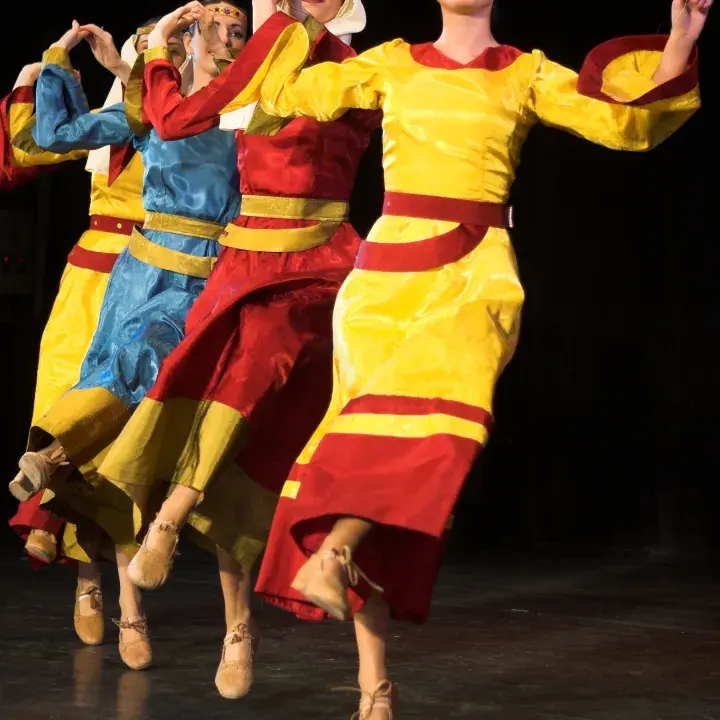This performance presents the historical process of the birth and survival of our Hungarian dance heritage, from our most ancient folk customs up to the period of the dance-house movement of the 1970's. Ancient Hungarian life and colorful history come to life, but instead of wars that can be learnt from history books, social gatherings and ancient celebrations are presented.
The well of Hungarian past sudely opens up: scenes of urban dance and music from the Middle Ages, splendid military dances of border fortress knights, the atmosphere of nobel ballrooms, wild feasts at the campfires of 18th century insurrectionist armies - these all come alive on stage.
'Dancing Hungarians' is not only about the year of the Hungarian Millennium (2000), and not only for people who are already somewhat familiar with Hungarian history. Dance appears as chronicler of bygone times, welcoming all viewers, foreigners and natives alike. History becomes tangible through folklore.
Part one - Historic scenes
The first part evokes historical dances in their original settings with authentic costumes.
Minstrels' Dance
One of our most ancient folk traditions is still alive today. Pictures of the traditional past dissolve into the music of the Middle Ages. An ancient Mongolian song, Siberian shaman drum and a poem by the famous Hungarian poet, János Arany aim to evoke the atmosphere of ancient pagan cults.
Village merriment
Girls' ritual circle dance accompanied only by their own singing in the churchyard after mass. The serenity of the scene is soon interrupted by the men's virtuoso line dance.
Court Celebration - The dance of the Prince
The 16th-century Transylvanian court was a contemporary center of arts. A ceremonial, flirtatious dance with gentle hand movements imitating birds.
Orchestral number
Reform Age ball
This part features the "czardas", the Hungarian Hussars and the men's verbunk (recruiting dance).
Part two - treasures of the folk tradition
This part shows how historical records changed and how history has become a tradition still alive today in our rural culture
Dances of finesse and skill
The men's implement dances in the Carpathian Basin are spectacular displays of dexterity, ingenuity, grace and creative improvisation.
Orchestral number
Dances of the Küküllő area (Transylvania)
An area long since inhabited by a mixture of ethnic groups: Hungarians, Romanians, Gypsies.
"When no one has money to pay a band,
there are ways to get the rhythm going for dancing..
"My heart is playing..."
Young people have been falling in love, dancing and singing for centuries
And finally
we focus on the latest fashion in Hungarian dance - old traditions revived by Hungary's youth in the city dance-houses.

